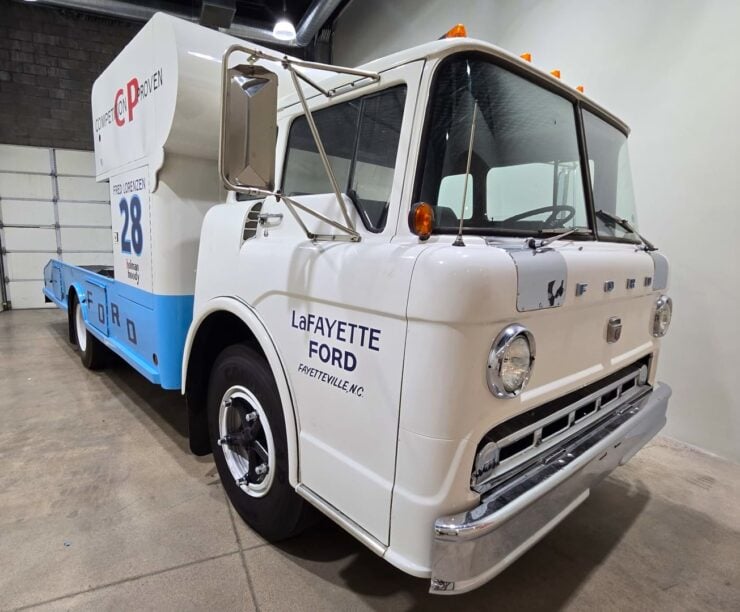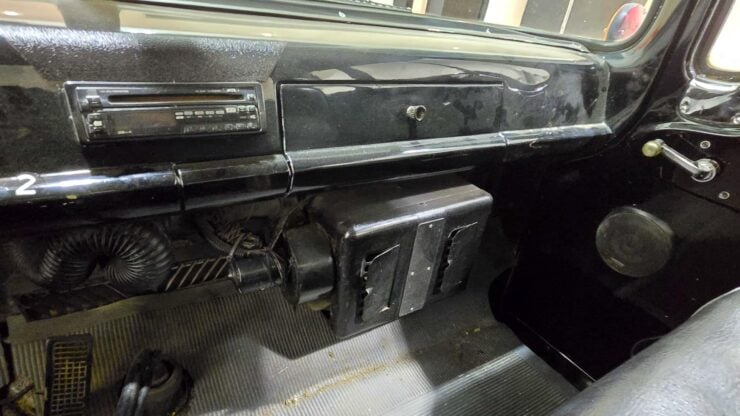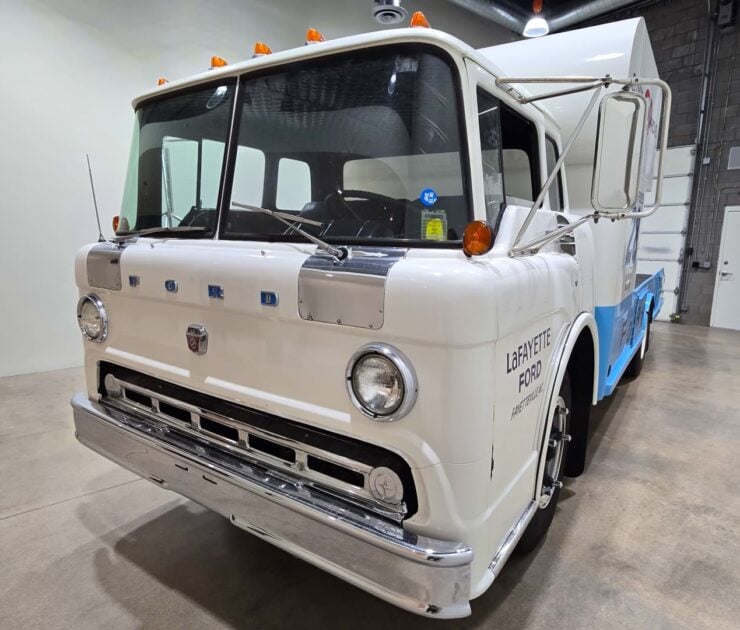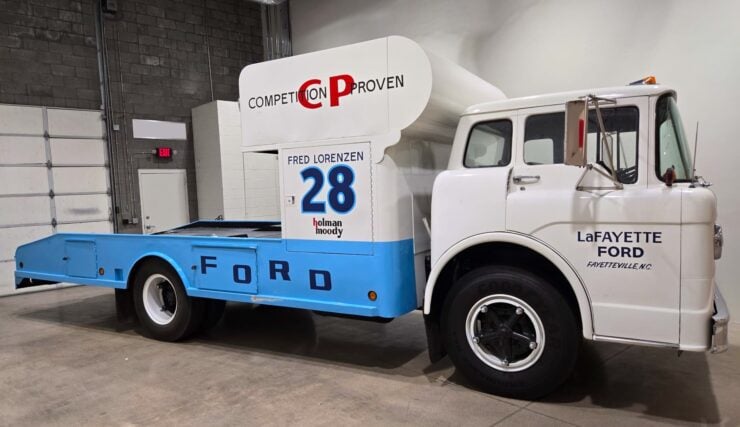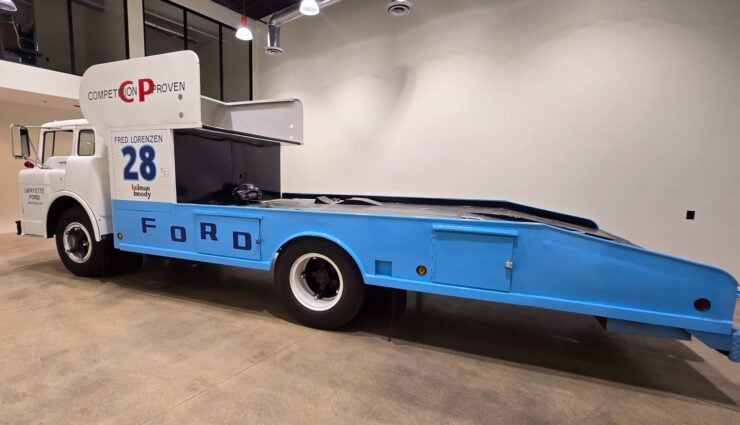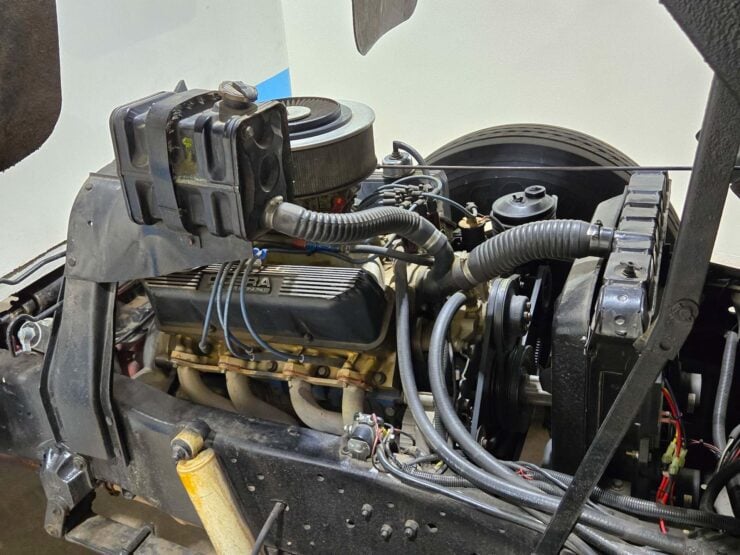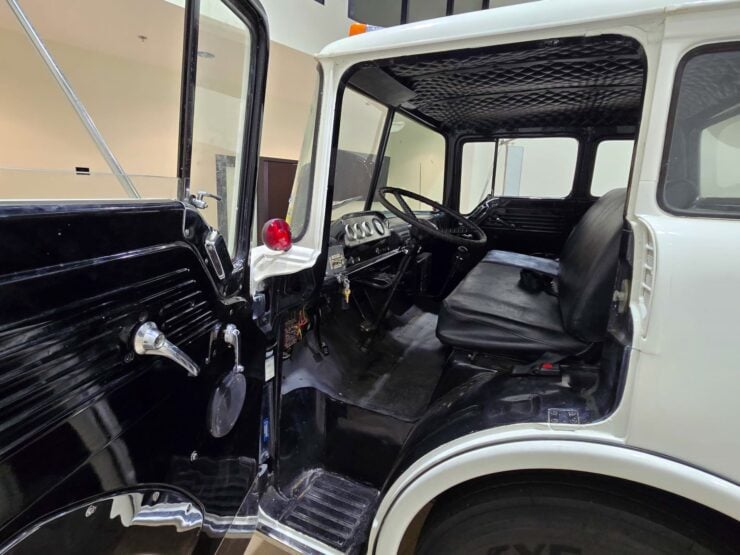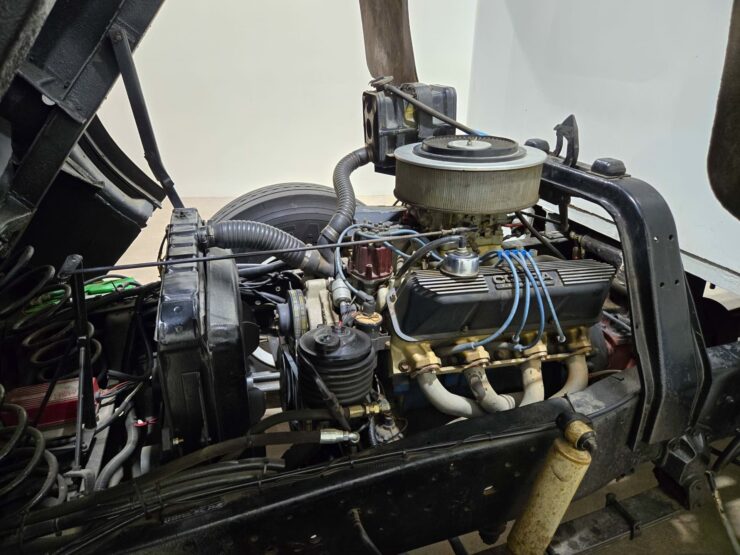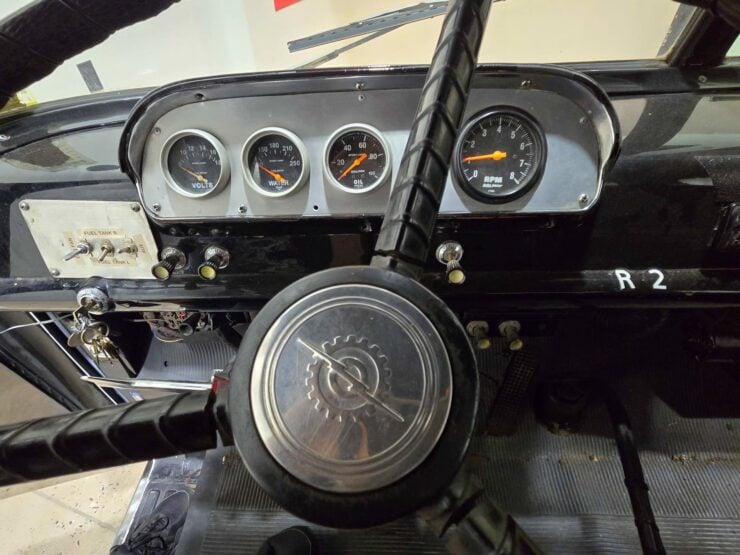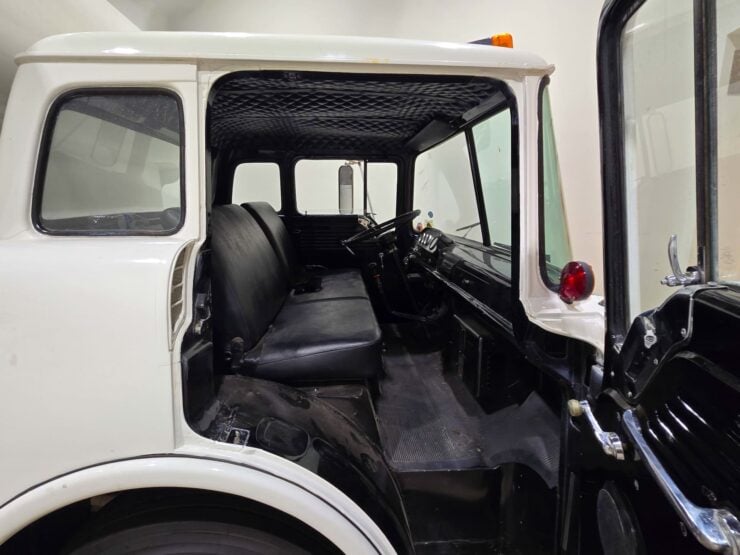This is a 1972 Ford C700 truck that was given a comprehensive restoration into a Holman Moody and Fred Lorenzen-style race car hauler – and it’s powered by a modified 428 Ford V8 mated to a 5-speed manual transmission.
Ramp trucks like this were ideal for use in race car transport duties and even today they’re a common sight in the paddock at vintage racing events from Laguna Seca to Goodwood. They’re also easier to navigate around busy race track lots than a truck and trailer combination.
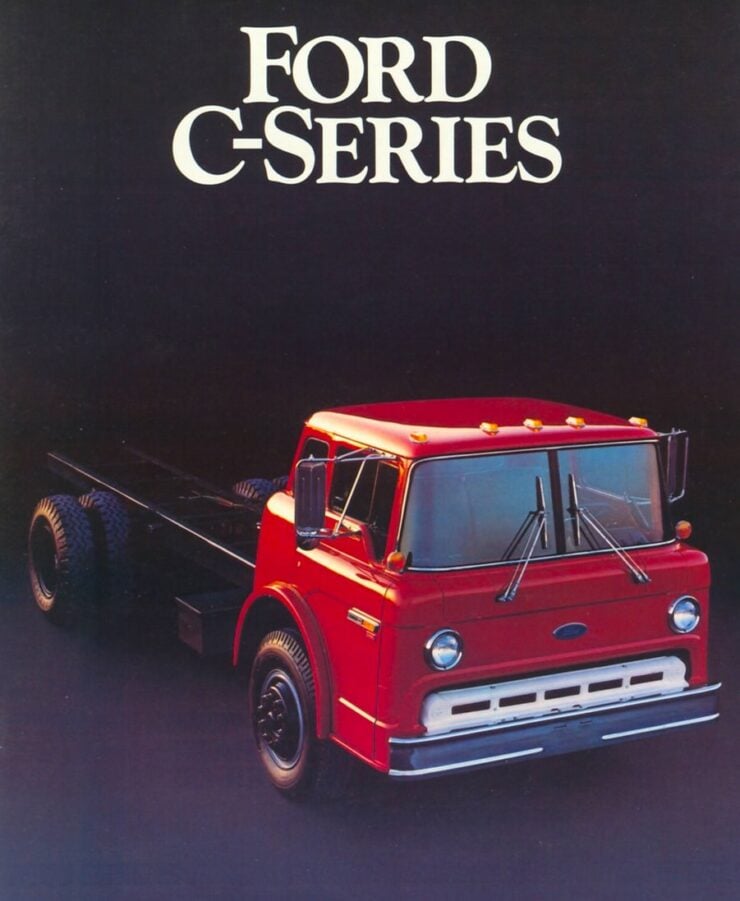

History Speedrun: The Ford C700
By 1972 the Ford C700 had carved out a reputation as a reliable medium-duty truck, designed to handle a wide range of commercial and municipal roles across the United States. Part of the long-running Ford C-Series – which was produced from 1957 to 1990 – the C700 sat in the middle of Ford’s COE (cab-over-engine) lineup, positioned neatly between lighter-duty models like the C500 and heavier rigs like the C900 and C1000.
The C700 carried the hallmark flat-faced design of the C-Series, with a forward-tilting all-steel cab that made engine access straightforward for the kind of frequent maintenance that was needed for the heavy use and long service hours these trucks often saw.
This C-Series design had been in use since the late 1950s, though it did receive subtle updates over the years. The 1972 model had dual headlights flanking a simple grille, rounded corners, and slab sides – it was a functional look that prioritized utility over aesthetics and aerodynamics.
Cab configurations ranged from standard config to crew cab, and the chassis was widely used for specialized applications including fire trucks, delivery vehicles, dump truck bodies, and even race car haulers.
Under the cab, the C700 typically came equipped with one of Ford’s large FE-series gasoline V8s. The 361 and 391 cubic inch engines were most common, chosen for their high-mileage durability but perhaps their low-end torque was the main drawcard.
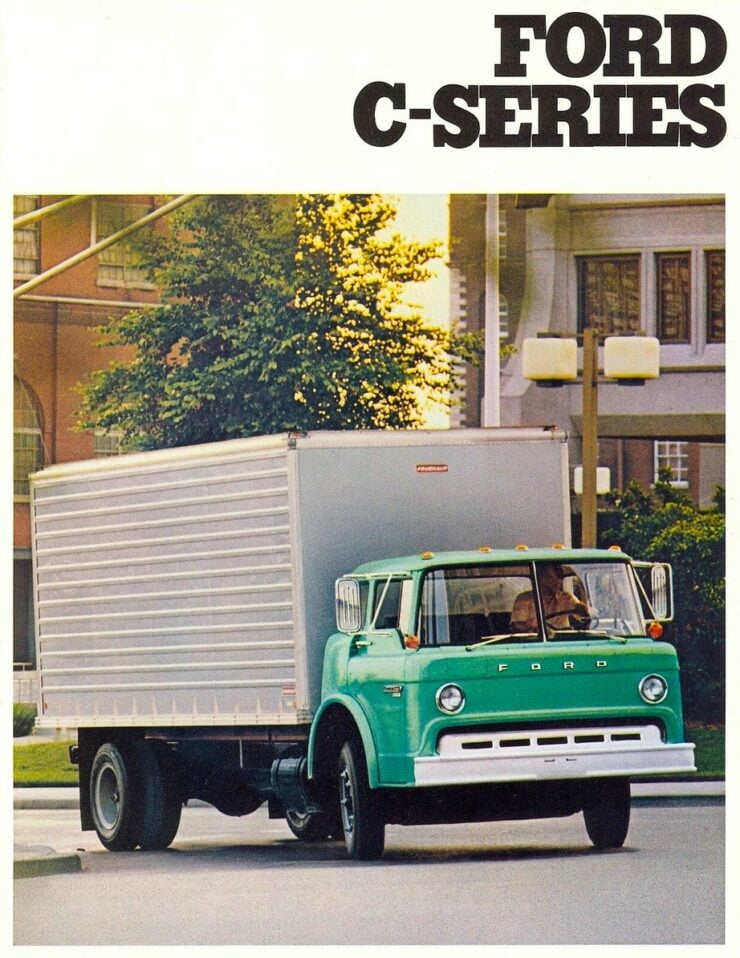


Diesel options were gaining popularity by the early 1970s due to their efficiency, this was increasingly important to trucking companies and fleet operators after the two major oil crises of the 1970s which had sent fuel prices skyrocketing – the 1973 Oil Crisis and the 1979 Oil Crisis.
After this time C700s could be ordered with inline-six diesels from Cummins, Caterpillar, or Detroit Diesel, depending on the specific operator’s needs. Transmission choices included 4 or 5-speed manuals, often paired with 2-speed rear axles or auxiliary gearboxes for more demanding applications – this effectively gave the truck 8 or 10 forward speeds respectively.
The chassis was a heavy-duty steel ladder frame with leaf-spring suspension front and rear. GVWR (Gross Vehicle Weight Rating) typically ranged from 21,000 to over 27,000 lbs, depending on configuration. Hydraulic brakes came standard, though air brakes were available for heavier-duty use, and they become more common later in the production run.
Companies like UPS and Coca-Cola relied on the C-Series for daily delivery work, while fire apparatus builders like Pierce and American LaFrance used the C700 cab for pumpers and ladders well into the 1980s.
Though production ended in 1990, many C700s remained in service for decades due to engine swaps that could help keep their efficiency improving as engines became more advanced. Thanks in no small part to its straightforward engineering and wide parts compatibility, the C700 still remains a favorite among restorers and vintage commercial truck collectors.
The 1972 Ford C700 Race Car Hauler Shown Here
As noted in the intro, this is a 1972 Ford C700 ramp truck that’s been converted into a vintage race car hauler with Holman Moody and Fred Lorenzen-styled livery. It would make an ideal transporter for Ford race cars from the period – anything from the Shelby GT350 to the Ford GT40.
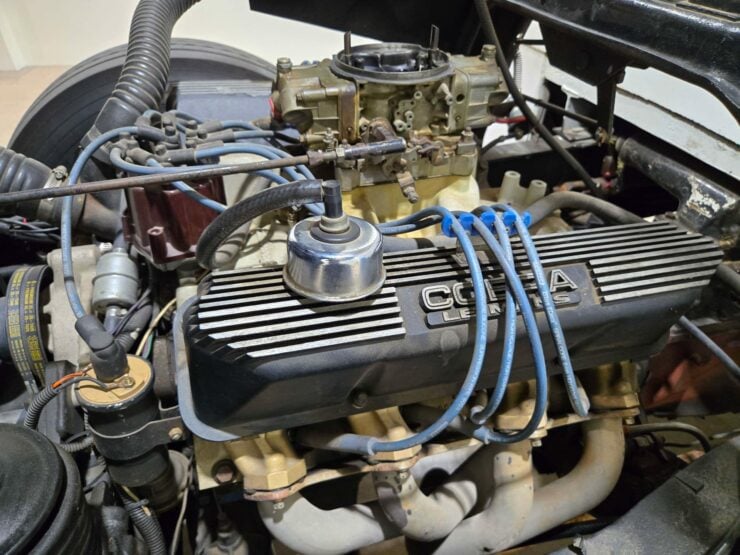


This C700 is now powered by a modified 428 Ford V8 fitted with aluminum heads and and an aluminum intake, performance headers, and it’s mated to a 5-speed manual transmission. It has a new Warn winch, a black interior, and hand-lettered “Competition Proven” Ford No. 28 graphics.
It’s now due to roll across the auction block with Mecum in mid-August, and you can visit the listing here if you’d like to read more about it or register to bid.
Images courtesy of Mecum


